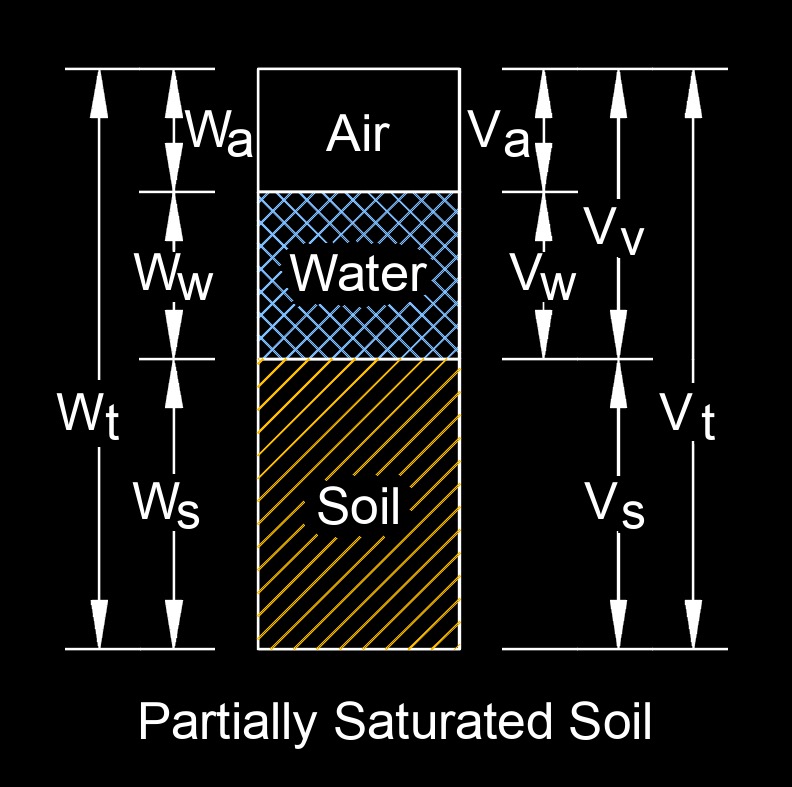Unit Weight
Unit Weight Formula |
||
|
\( \gamma \;=\; \dfrac{ W_t }{ V_t }\) (Unit Weight) \( W_t \;=\; \gamma \cdot V_t \) \( V_t \;=\; \dfrac{ W_t }{ \gamma }\) |
||
| Symbol | English | Metric |
| \( \gamma \) (Greek symbol gamma) = unit weight | \(lbm \;/\; ft^3\) | \(N \;/\; m^3\) |
| \( V_t \) = total volume of soil | \(ft^3\) | \(m^3\) |
| \( W_t \) = total weight of soil | \(lbf\) | \(N\) |
Unit weight, abbreviated as \(\gamma\), is a measure of the weight or density of soil per unit volume. It is used to characterize the properties of soils for various engineering and construction applications. The total volume of soil includes both the volume of solid particles and the volume of voids or pore spaces within the soil.
There are Two Types of Soil Unit Weight
Dry Unit Weight - This is the weight of the solid soil particles (excluding any pore water) per unit volume of the soil.
Saturated Unit Weight - This is the weight of the soil, including both the solid particles and the water that saturates the soil, per unit volume.
The soil unit weight can vary depending on factors such as the type of soil, its compaction state, and its moisture content. Engineers use soil unit weight to assess the bearing capacity of soil, design foundations, analyze slope stability, and determine the lateral earth pressure in retaining wall design, among other geotechnical applications. It is an essential parameter in geotechnical investigations and soil mechanics.


